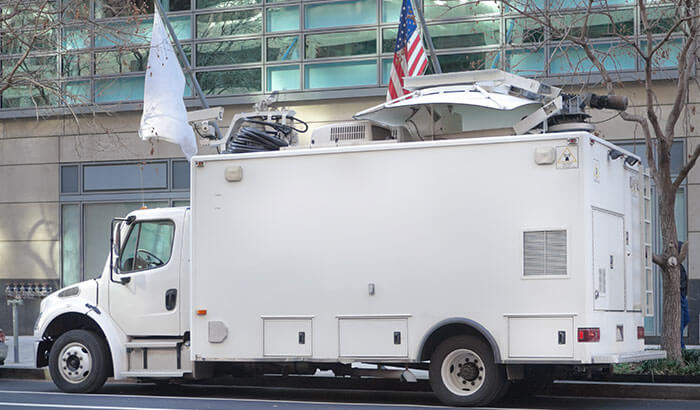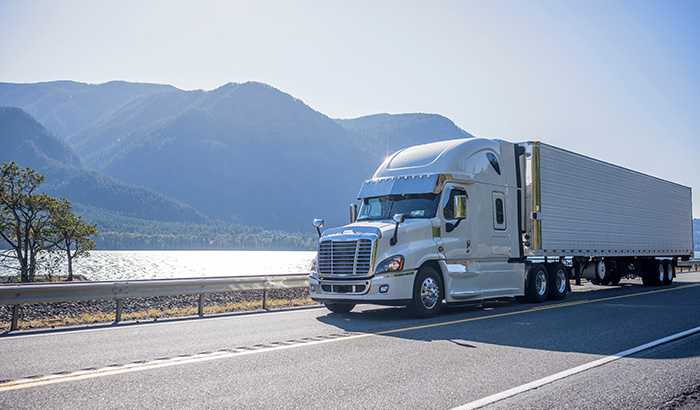— by
Would you tolerate sitting at a desk with drawers that won’t open and a block of wood holding it up on one side? Or using a Pentium II computer running Windows 95? How about an office chair that sags to one side on a broken wheel? Drivers don’t much like the truck-cab equivalent, either. If you hope to attract and keep good drivers these days — even decent drivers — you’ll have to do better than that.
To be fair, it’s hard to find any serious fault with the modern driving environment. Seating is considerably better. Even the so-called stock seats are pretty darned good. Trucks are quieter and roomier, and they offer some pretty slick entertainment, climate control and hotel options.
The question is whether your fleet is exploiting these options for the benefit of your drivers.
Among one of the more sobering facts to come to light in a recent American Trucking Associations driver pay survey was the revelation that about two-thirds of the drivers who left their current carriers did so voluntarily. That suggests there’s something afoot they aren’t happy with, or that they perceive life would be better under a competitor’s colors.
It could be pay or home time issues that are sending them packing, but it could also be that they are unhappy with the trucks they are driving. Whatever the reason for their discontent, the annualized turnover rate for 2014 wound up at over 95%. Perhaps a newer, better mattress would help them sleep better at night? Or maybe an on-board satellite TV system or a more comfortable seat?
Danny Schnautz, manager of Clark Freight Lines of Pasadena, Texas, says drivers there get an allowance to “customize” their trucks.
“The trucks are all dedicated, to begin with,” he says. “When the driver is off, the truck sits. Nobody else drives it. So we give drivers an allowance to help make their truck their home. Most choose aftermarket lights and chrome, some add premium sound systems. I remember one driver in particular who added huge subwoofer speakers under the bunk.”
Schnautz says every one of their 50 trucks is spec’d with top of the line interiors, the best tires and even accessory lighting packages (installed in the shop). He claims turnover at Clark Freight is less than 10%, so that opens the door to more personal relationships with the drivers, making the perks a little easier to apply.
Those sorts of relationships are a little harder to maintain in a very large fleet, but there are still plenty of ways to build better relations with driver through equipment spec’ing.
Consider the average age of our workforce. It’s estimated that 51% of drivers are over age 45 and 17% are over age 55. A little TLC applied to their worn and weary bones might be welcome.
Daniel Lewis, global aftermarket program manager at Commercial Vehicle Group, manufacturers of Bostrom and National seating products, says the health benefits of better seating and mattress products in trucking can’t be overstated.
“Consider the health costs associated with poor seating posture and sleeping conditions,” Lewis points out. “With a quality seat, you get better weight distribution through the legs and lower back with fewer pressure points, better circulation and better posture thanks to multiple lumbar adjustments.”
As drivers age, many of them complain of back pain and related ailments, and for some it’s a career-limiting problem. Earlier this year, Mike Rosen, Bose Ride System’s chief engineer and general manager offered a testimonial from a driver who was close to retiring because of back pain, but when provided with a new Bose seat suspension found that he could continue driving without the pain he experienced with his previous seat.
That may be an extreme example, but it seems the product has kept at least one driver around a little longer.
Lewis also suggests sleeper mattresses deserve a little more attention. While most of the OE offerings are much better now than they once were, they still are not up there with some of the premium sleep products we buy for our own bedrooms. Who can argue with the need for a good sleep in this safety-driven world, especially in team operations where the bed is always in motion?
“Sleeper mattress can be a health matter as well,” Lewis points out. “In slip-seat operations, drivers don’t like sharing a bed with a driver they may not even know. Some aftermarket offerings allow the mattress to be removed easily from the truck so the driver can keep his or her own matress as they move from truck to truck.”
Off-duty comfort
Living in a 50-square-foot space doesn’t offer a lot of opportunity for luxury, but it can be made bearable. Items like fridges and microwaves can make the layovers more pleasant, or at least less expensive. High-output inverters make those sorts of amenities possible, and it’s always safer to have them professionally installed.
Schnautz says his company opts for the top-of-the-line interior packages with extra insulation where it’s available to keep the cab quieter.
Owner-operator Jeff Clark says one of the best investments he has made in cab comfort was a heated seat.
“I live in Green Bay, Wisconsin,” says Clark. “What can I say? It sure is nice on one of our cold winter mornings.”
Stageline Express of Coopersville, Mich., recently installed satellite TV systems in 40 of its trucks. President, Tom Freeland, says the decision was all about enhancing the quality of the drivers’ downtime.
“EpicVue appealed to us because the life of a driver on the road is hard and when they have a rest period there’s not much to do,” he says. “Whether it’s watching a movie they recorded or following their favorite team on NFL team on Sunday, it all adds up to a more enjoyable work environment.”
And if you don’t think small things matter to drivers, consider this from Kenworth’s Director of Marketing Kurt Swihart. He says the company’s recently introduced swiveling passenger seat and the fold-out right-hand-side table meant the difference in a fleet sale.
“The company told us their drivers were offered input on the next bunch of trucks the fleet was ordering,” he says. “They opted for Kenworth over a competitor based just on that option. They wanted the extra room and convenience of the table and the comfortable seat rather than sitting on the bed watching TV, eating and doing paper work.”
When it comes to spec’ing cab comfort amenities, the options are many and they aren’t usually terribly expensive. Items like high-performance auxiliary power units or HVAC systems can add up, but the ROI is almost always there. Like the less expensive items, ROI decisions should include intangibles like driver satisfaction and improved retention, and thus lower recruiting costs and reduced turnover.
It’s not getting any easier to find new drivers, so something has to be said for keeping the ones you already have.
Original source: truckinginfo.com




